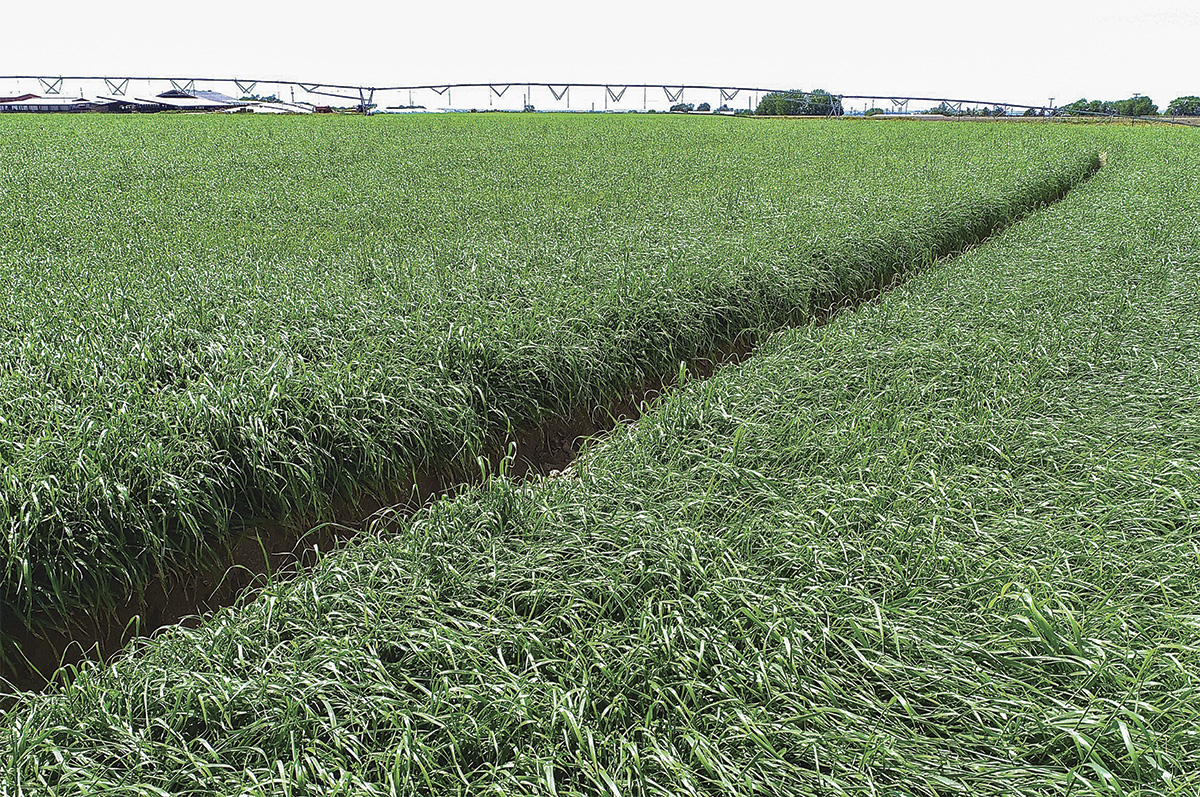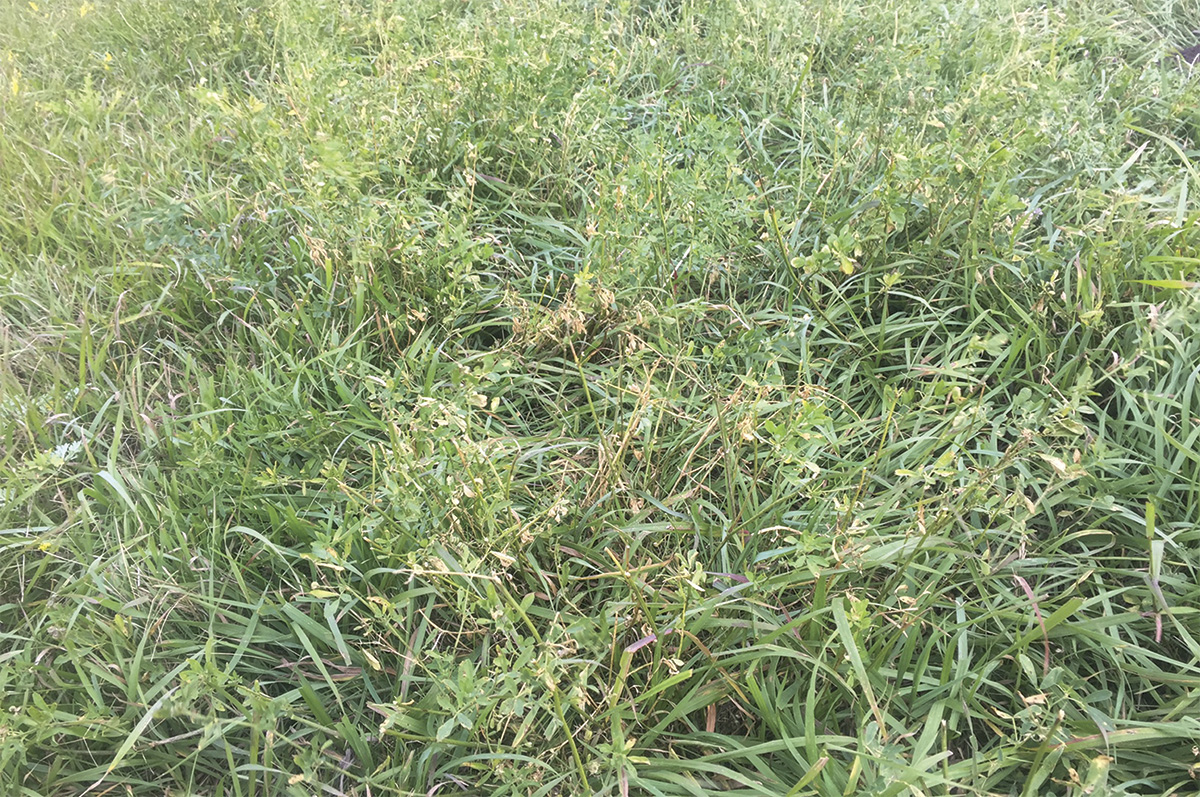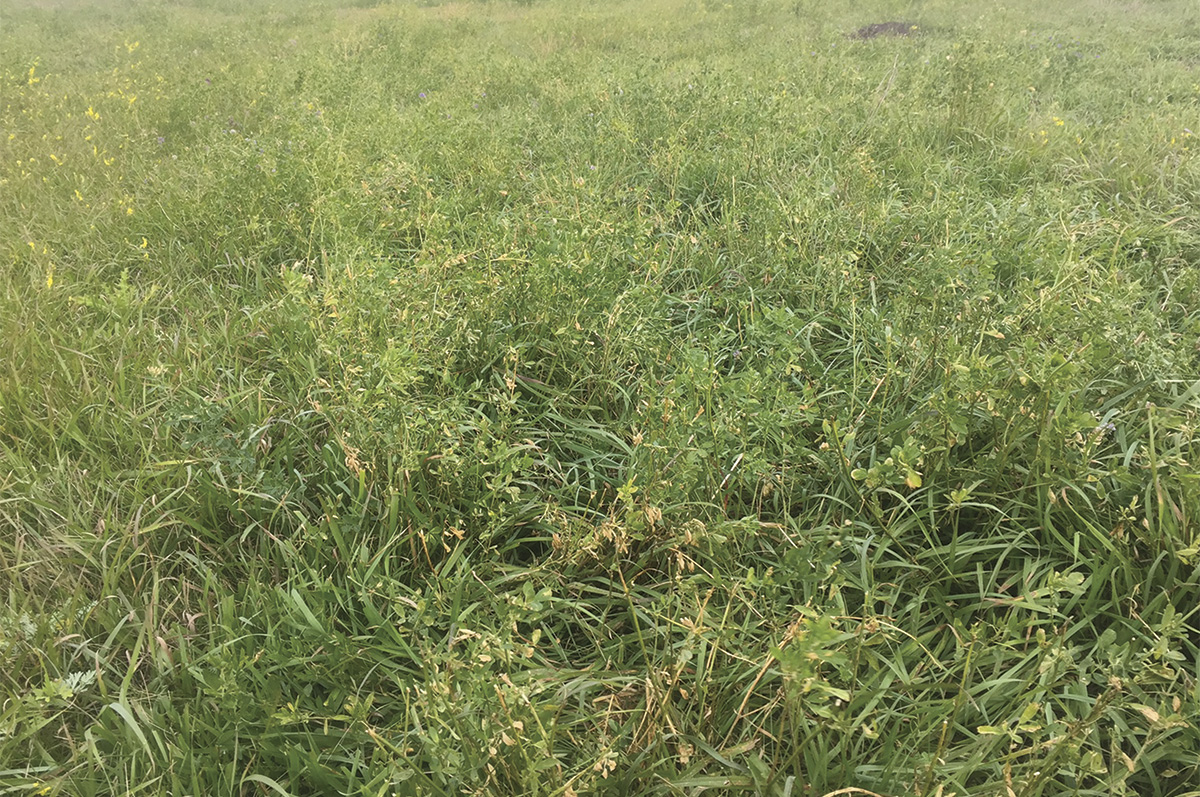Many grasses and legumes can be utilized in pastures or hayfields today to improve production, and new varieties are better than some of the traditional forages. When selecting something to plant, look at what might work best in your situation. Luke Wilson, market development manager for Barenbrug USA, says this is what cattle producers generally do when selecting a new bull.
“Cattlemen study sale catalogs and evaluate the genetics, and try to select bulls that might improve their herd. But when people look at forages, they generally don’t assess the genetics of species they are thinking about planting. When growing pasture or hay for livestock, they might have the best beef or dairy genetics in the world – but if they don’t have optimum forage for those animals to express that potential, they won’t be as successful,” says Wilson. Even if a person is just growing hay to sell, improved forages will do better and be worth more.
Different species thrive in different climates. Tall fescue is the main forage in much of the U.S. Most of it is endophyte-infected – which makes it hardy enough to thrive in many climates. The endophyte is beneficial to the plant but not to the cattle that consume it. The endophyte creates toxins that hinder blood circulation, making cattle more vulnerable to heat stress and cold stress.
Today, there are varieties of tall fescue that contain novel beneficial endophytes. “We now have a soft-leaf tall fescue; this isn’t your ‘grandfather’s grass’ because we’ve made so many improvements in the species. These cultivars have lower lignin levels – making them more palatable, with better fiber digestibility. We’ve added more positive traits and taken away the negative ones, but still have beneficial characteristics like drought tolerance and survivability of the hardy plant,” says Wilson. The original Kentucky 31 variety is good for ground cover but not for animals.
“When establishing a pasture, it pays to look at available options for your own area. For arid Western regions, there have been improvements in fescues and orchardgrass that can do better on drier rangelands, requiring less water. You can get maximum production with these species, compared to what was available in the past.”

Green Spirit forage variety is ready for third cutting. Photo by Luke Wilson.
When establishing a pasture, it’s also helpful to use mixes with a blend of at least a couple of species. “This helps spread the risk – like an insurance policy. Whatever Mother Nature throws at us, we need a species out there that can handle it,” he says.
If you are establishing a new pasture and there might be a weed problem, he recommends getting the grasses established first. “This enables you to spray and get rid of the weeds. If you try to establish grass and legumes at the same time – and then have a weed problem – you can’t spray without harming the legumes,” says Wilson. If you have a clean seed bank and the ground was in row crops before, you can plant a mix and establish everything together.
There have also been advancements in seed coating technologies. “This can help with germination and getting the plant up and going. The germination stage is when the plant is most vulnerable to injury, whether from drought or other stresses. Having the seed coated and being able to pull in moisture so it can germinate and have what it needs in terms of a nutrient pack to get it going will enable faster establishment. This can really help in some of the more severe climates,” he says.
There have been many advances in species varieties. “Some of the varieties still being planted today are 80 to 90 years old. How many people are still farming with the same equipment that was in use 80 years ago? Most farmers have upgraded machinery. There have been advancements in grasses and legumes in the seed industry that people are not taking advantage of. Some might not yield more volume than the older ones, but the animals that eat them may do better because of better forage utilization.”

Alfalfa-meadow brome regrowth is shown. Photo by Kevin Sedivek.
Tips on establishing a new stand
When assessing a pasture to evaluate when or what might need to be done to improve it, look at overall density of the pasture. “If we see more than 15 percent bare ground or less than two legume plants per square foot, we need to increase pasture productivity by adding more plants,” Wilson says.
“In some climates, you might be able to frost seed or inter-seed clovers or alfalfa to add a legume. Frost seeding doesn’t take many pounds of seed for clovers, and you can broadcast that seed right before the spring thaw.”
Weight of the clover seed (which is heavier than grass seed) enables it to work its way into the ground during the honeycombing effect when ground thaws. “This provides the necessary seed-to-soil contact. Grass seed isn’t heavy enough to achieve seed-to-soil contact and is more likely to blow away or be eaten by birds,” says Wilson.
“If you want to increase grass content of a pasture, you probably need to use a drill to ensure proper seed-to-soil contact. When you interseed grass into an existing stand, one of the worst things you can do is put it in and not graze or hay it,” he explains. You don’t want to overgraze new plants, but you should lightly graze pasture; otherwise, the established grasses that are already there will get ahead of the new seedlings and canopy over them. The new grasses need sunlight.
You don’t want to overprotect it by not grazing or harvesting. “Even when seeding a new hayfield using a nurse crop, you want to get that nurse crop off quickly so it won’t shade out the new seeding.”

Alfalfa-meadow brome mix can improve stand longevity. Photo by Kevin Sedivek.
If you didn’t have a chance to evaluate a pasture in the fall and get into the next growing season and realize you need more productivity, there are still some things you can do. “It’s not too late to drill more seed into it once spring grass starts. Depending on the region, it might be a situation where halfway through the spring if you don’t like the production, you could add a warm-season grass to increase production during summer.”
He stresses the importance of having diversity in the mix. “Don’t put all your eggs in one basket. There are more total nutrients and a better balanced diet for cattle when you have more than one species in your pasture. It’s better for the plants as well. You get a symbiotic relationship between legumes and grasses; they benefit each other.”
“Maybe you want a total renovation, but if you can’t get that pasture up and going right now, annuals can be an interim solution for this year. If you want to stay on the same rotation and not break it up, however, you can add more perennial grasses and legumes to the existing pasture.” To improve forage production on your place, take time to research the improved varieties available.











